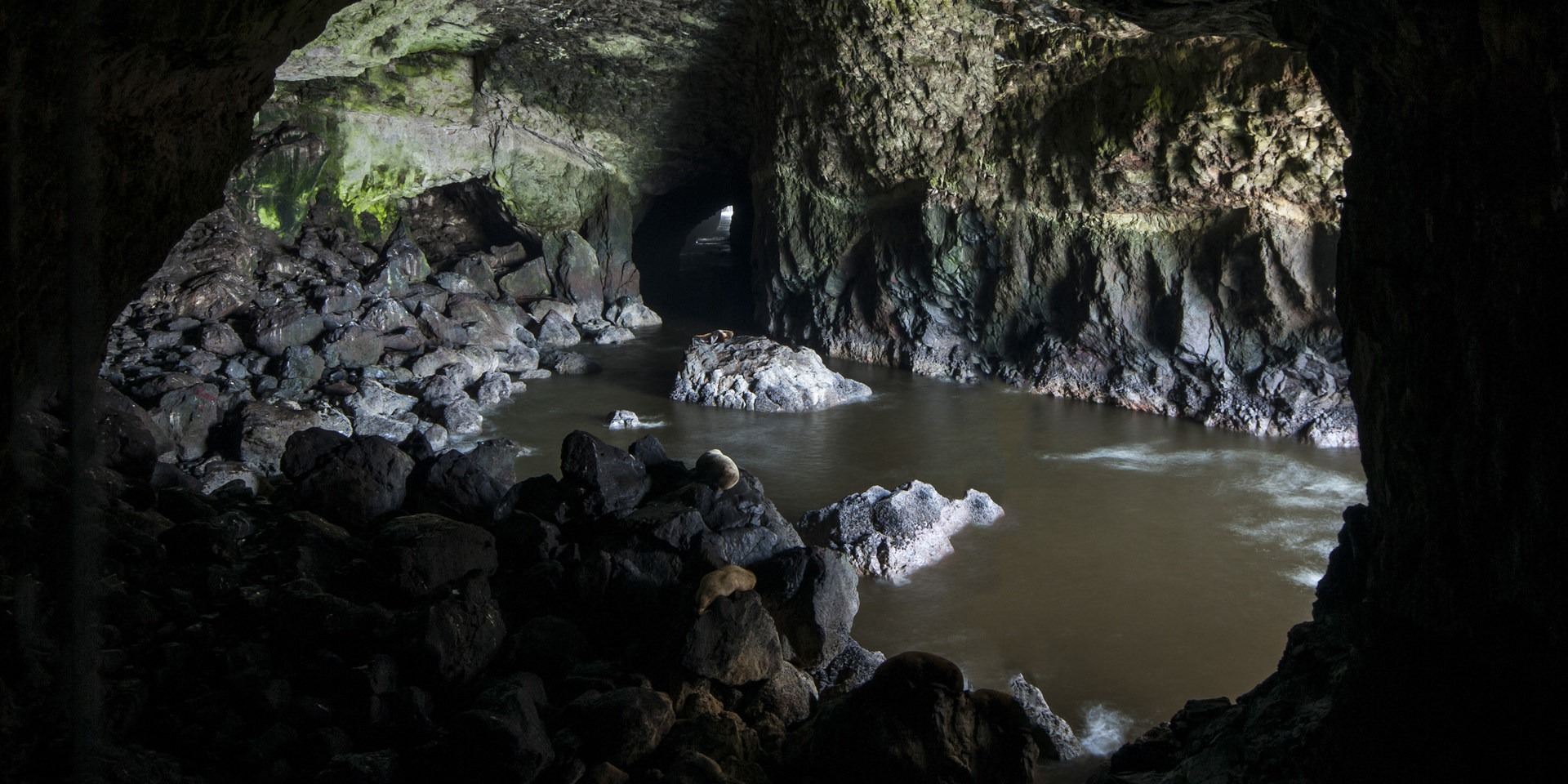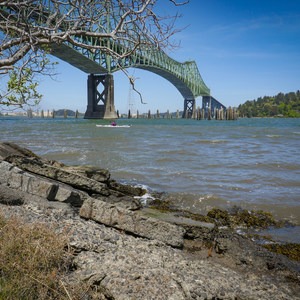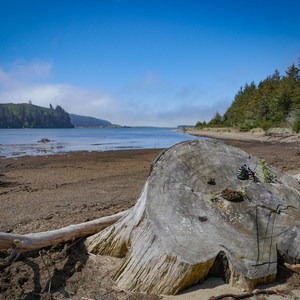Noted as the largest sea cave in the United States, Sea Lion Caves on the Central Coast of Oregon is an impressive network of subterrainian caverns that are home to an enormous herd of some 200 to 300 Stellar sea lions.
First discovered in 1880, the caves were first exploited for commercial purposes and made accessible to the public in 1932. A 1,500-foot trail meandered down Sea Lion Point to a 135-step wooden stair tower that connected to the cave's northern entrance. Later, in 1961, an elevator was installed that involved boring 208 feet down through the basalt headland.
Today the public access to Sea Lion Caves is still privately controlled, and a day use fee is required for entrance. Despite the commercial vibe of the establishment, however, the day use fees and gift shop funds are used to help maintain the site's sophisticated infrastructure and the extensive and highly educational exhibits.
Throughout the site, visitors will enjoy lookouts where gray whales can often be spotted offshore, western gulls perch, and countless Brandt's cormorants can be seen nesting on the headlands steep cliffs. The main attraction is the impressive colony of Steller sea lions that dominate the shore and cave by way of sight, sound, and distinct smell. Steller sea lions, which dominate the northern Pacific from Japan to California, are the largest of all eared seals; of all seals (pinnipeds), only walruses and elephant seals are larger. According to Wikipedia, "Like all other otariids (eared seals), Steller sea lions are polygynous. However, unlike some other species, they (males) do not coerce individual females into harems, but control spatial territories among which females freely move about."
For visitors, the winter months are the best oportunity for viewing the sea lions in the cave. During the warmer spring and summer months, the lions usually remain outside on their rookery for breeding and birthing pups. For viewing gray whales, summer months are best, as resident and migrating whales off the headland can often be counted by the handful.
Sea Lion Cave is part of the Cape Perpetua Marine Reserve and Marine Protected Areas. This means that there are specific prohibitions against fishing and the harvesting of fish, invertebrates, and seaweed. Check here for specific clarifications on regulations, exemptions, and a detailed representation of the area's boundaries.
Logistics + Planning
Current Weather: Powered by Dark Sky







Preferable season(s)
Congestion
Parking Pass
Pros
Cons
Pets allowed
Features
A profound concept originally envisioned by governor Oswald West, in 1967 the Oregon legislature ultimately realized his vision of making the entire Oregon Coast forever open to the public in a piece of landmark legislation titled the Oregon Beach Bill, officially making all 363 miles public land. "The People's Coast" is truly a one-of-a-kind coastline, a unique blend of mountains and rocky stacks, towering old growth forests, marine sanctuaries, tide pools and kelp forests, charming towns, historic fishing communities, world-class golfing, breweries, and simply jaw-dropping scenic beaches. We encourage you to plan your next trip at visittheoregoncoast.com or by calling (541) 574-2679.
























Comments
Sign In and share them.